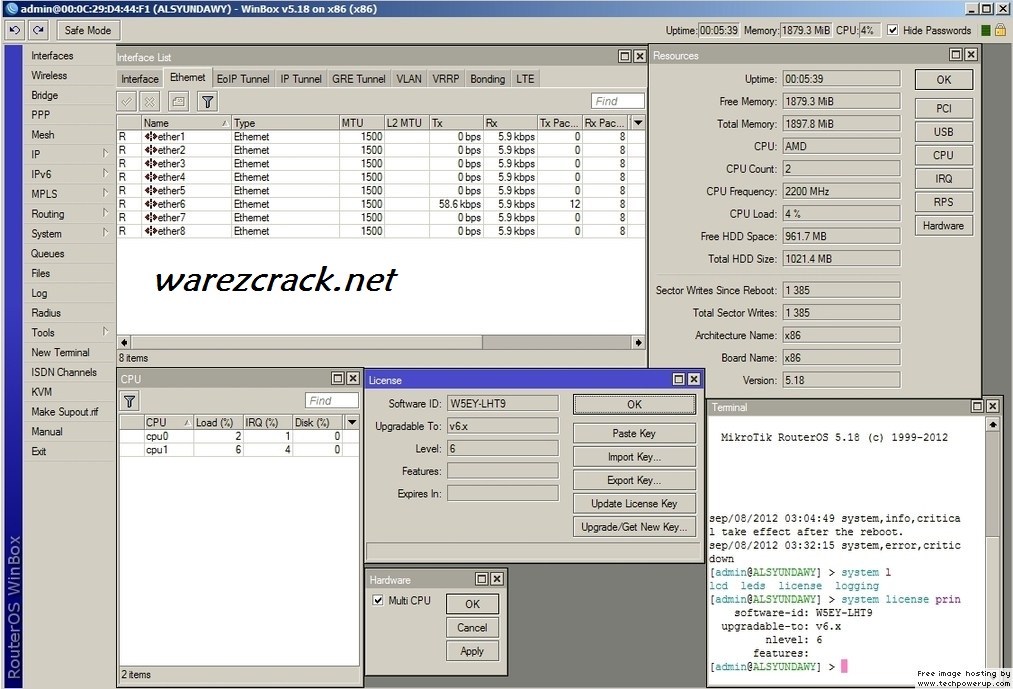MikroTik RouterOS User Management Best Practices
In recent years, MikroTik RouterOS v6 has emerged as a highly desired and efficient platform for individuals and businesses seeking to optimize their network performance. With its comprehensive suite of features, this proven solution has helped countless organizations achieve their goals and maintain a competitive advantage.

One of the key strengths of MikroTik RouterOS v6 is its ability to provide detailed and nuanced control over network traffic, which in turn can improve resource allocation and network security. By carefully configuring this platform according to their unique needs and workflows, users can achieve greater efficiency and flexibility than ever before.
Here are just a few of the main features and benefits of MikroTik RouterOS v6:
1. Advanced Traffic Management
- Bandwidth Shaper - Allows users to control the amount of traffic that enters or exits their network, and can be used to prioritize certain types of traffic (like VoIP) over others.
- Firewall - Provides highly flexible and customizable firewall rules, enabling users to block certain types of traffic (like spam or malware) from ever reaching their network.
- Quality of Service (QoS) - Gives users granular control over the priority given to different types of traffic; for example, VoIP traffic can be prioritized over other types of traffic to ensure seamless communication.
2. Enhanced Security and VPN Support
- User Management - Offers robust and granular user management functionality, allowing network administrators to easily create and manage user accounts for their network.
- VPN Support - Supports a variety of VPN protocols, including PPTP, L2TP, OpenVPN, and more, providing secure and reliable remote access to network resources.
- Layer 2 Tunneling Protocol (L2TP) - Provides a secure way to connect remote clients to a network, while ensuring that data remains private and confidential.
3. Flexible Routing and NAT Capabilities
- Routing - Gives users a wide range of routing options, including static routing, OSPF, BGP, RIP, and more, providing flexibility and adaptability for complex networking environments.
- Network Address Translation (NAT) - Provides powerful and versatile NAT features, such as 1:1 NAT and port forwarding, allowing users to deploy network resources more efficiently and effectively.
- Multi-WAN - Supports multiple WAN connections, enabling users to improve network performance and reliability by balancing traffic across multiple connections.
4. Integrated Hotspot and User Authentication
- Hotspot - Provides an integrated hotspot solution that can be used to provide guest access, public Wi-Fi access, and more, ensuring a high level of security and user control.
- User Authentication - Supports a variety of authentication mechanisms, including RADIUS, LDAP, and more, to ensure that only authorized users can access network resources.
- Captive Portal - Enables the creation of customized captive portals, including login pages and splash pages, that can be used to control and manage guest access to the network.
5. Robust Monitoring and Reporting Capabilities
- Traffic Flow - Provides detailed insights into network traffic patterns, enabling users to identify potential bottlenecks, security threats, and other issues.
- Resource Usage - Monitors resource usage, including CPU, memory, and disk usage, allowing users to proactively detect potential issues and take corrective action.
- Logging and Reporting - Includes comprehensive logging and reporting functionality, making it easy to track network activity, identify problems, and generate detailed reports.
These are just a few of the many powerful features and benefits of MikroTik RouterOS v6. Whether you're looking to optimize your network for performance, security, or scalability, this proven platform is an excellent choice that delivers exceptional value and flexibility.



Post a Comment for "MikroTik RouterOS User Management Best Practices"